Joliet, Illinois Blood Testing Facilities
 Represents a LabCorp blood testing facility
Represents a LabCorp blood testing facility Represents a Quest Diagnostics blood testing facility
Represents a Quest Diagnostics blood testing facility

Nearby Labcorp Blood Testing facilities:
- Labcorp Center Distance: 2 m, 2025 S. Chicago Street, Joliet, Will County, IL, 60436
- Labcorp Center Distance: 11 m, 10737 W. 165Th Street, Orland Park, Cook County, IL, 60467
- Labcorp Center Distance: 13 m, 2272 W 95Th Street Ste 100, Naperville, Will County, IL, 60564
- Labcorp Center Distance: 15 m, 16325 Harlem Ave Ste 110, Tinley Park, Cook County, IL, 60477
- Labcorp Center Distance: 18 m, 1020 E Ogden Ave Ste 208, Naperville, Dupage County, IL, 60563
- Labcorp Center Distance: 20 m, 522 W Chestnut Street, Hinsdale, Dupage County, IL, 60521
- Labcorp Center Distance: 26 m, 725 W Fabayan Parkway Suite D, Batavia, Kane County, IL, 60510
- Labcorp Center Distance: 33 m, 141 E. Irving Park Road, Streamwood, Cook County, IL, 60107
- Labcorp Center Distance: 34 m, 111 N. Wabash Avenue Ste 1710, Chicago, Cook County, IL, 60602
- Labcorp Center Distance: 36 m, 2338 Higgins Rd, Hoffman Estates, Cook County, IL, 60195
- Labcorp Center Distance: 37 m, 450 Dundee Ave, Elgin, Kane County, IL, 60120
- Labcorp Center Distance: 38 m, 121 South Wilke Rd 405, Arlington Heights, Cook County, IL, 60005
- Labcorp Center Distance: 39 m, 387 East 84Th Dr, Merrillville, Lake County, IN, 46410
- Labcorp Center Distance: 40 m, 1710 N Randall Road Ste 240, Elgin, Kane County, IL, 60123
- Labcorp Center Distance: 41 m, 2601 Compass Rd Suite 135, Glenview Nas, Cook County, IL, 60026
- Labcorp Center Distance: 44 m, 9150 E 109Th Ave Ste C-1, Crown Point, Lake County, IN, 46307
- Labcorp Center Distance: 49 m, 5911 Northwest Highway Ste 108, Crystal Lake, McHenry County, IL, 60014
- Labcorp Center Distance: 55 m, 880 Eastport Centre 2Nd Floor, Valparaiso, Porter County, IN, 46383
- Labcorp Center Distance: 58 m, 35 Tower Ct Ste E, Gurnee, Lake County, IL, 60031
- Labcorp Center Distance: 73 m, 6530 Sheridan Road, Kenosha, Kenosha County, WI, 53143
- Labcorp Center Distance: 84 m, 1703 Clearwater Ave, Bloomington, McLean County, IL, 61704
- Labcorp Center Distance: 95 m, 2419 W. Cornerstone Ct Ste B, Peoria, Peoria County, IL, 61614
- Labcorp Center Distance: 98 m, 3515 N Main St. Ste 2, Mishawaka, St Joseph County, IN, 46545
Nearby Quest Blood Testing facilities:
- Quest Center Distance: 2 m, 310 N Hammes Ave, Joliet, Will County, IL, 60435-5676
- Quest Center Distance: 11 m, 24600 W 127Th St, Plainfield, Will County, IL, 60585-9507
- Quest Center Distance: 12 m, 484 W Boughton Rd, Bolingbrook, Will County, IL, 60440-2398
- Quest Center Distance: 13 m, 9046 W 159Th St, Orland Park, Cook County, IL, 60462-5646
- Quest Center Distance: 15 m, 7530 Woodward Ave, Woodridge, Dupage County, IL, 60517-3100
- Quest Center Distance: 16 m, 640 S Washington St, Naperville, Dupage County, IL, 60540-6693
- Quest Center Distance: 17 m, 2088 Ogden Ave, Aurora, Kane County, IL, 60504-4376
- Quest Center Distance: 19 m, 19150 South Kedzie Ave, Flossmoor, Cook County, IL, 60422-0001
- Quest Center Distance: 20 m, 534 Chestnut St, Hinsdale, Dupage County, IL, 60521-3175
- Quest Center Distance: 21 m, 10837 S Cicero Ave, Oak Lawn, Cook County, IL, 60453-6458
- Quest Center Distance: 22 m, 1100 W Veterans Pkwy, Yorkville, Kendall County, IL, 60560-4728
- Quest Center Distance: 25 m, 1180 W Wilson St, Batavia, Kane County, IL, 60510-7693
- Quest Center Distance: 26 m, 175 E Bethel Dr, Bourbonnais, Kankakee County, IL, 60914-1456
- Quest Center Distance: 27 m, 17665 Torrence Ave, Lansing, Cook County, IL, 60438-4839
- Quest Center Distance: 28 m, 2631 Williamsburg Ave, Geneva, Kane County, IL, 60134-1111
- Quest Center Distance: 29 m, 8840 Calumet Ave, Munster, Lake County, IN, 46321-2546
- Quest Center Distance: 34 m, 1460 N Halsted St, Chicago, Cook County, IL, 60642-2605
- Quest Center Distance: 35 m, 885 S Randall Rd, Elgin, Kane County, IL, 60123-3002
- Quest Center Distance: 36 m, 2500 W Higgins Rd, Hoffman Estates, Cook County, IL, 60169-7208
- Quest Center Distance: 37 m, 1600 Dempster St, Park Ridge, Cook County, IL, 60068-1172
- Quest Center Distance: 38 m, 119 E 93Rd Ave, Crown Point, Lake County, IN, 46307-8601
- Quest Center Distance: 39 m, 800 Austin St, Evanston, Cook County, IL, 60202-3439
- Quest Center Distance: 40 m, 4709 W Golf, Skokie, Cook County, IL, 60076-1258
- Quest Center Distance: 41 m, 337 W Northwest Hwy, Palatine, Cook County, IL, 60067-2414
- Quest Center Distance: 44 m, 3244 Sycamore Rd, Dekalb, Dekalb County, IL, 60115-4941
- Quest Center Distance: 45 m, 1450 Busch Pkwy, Buffalo Grove, Lake County, IL, 60089-4541
- Quest Center Distance: 49 m, 565 Lakeview Pkwy, Vernon Hills, Lake County, IL, 60061-1839
- Quest Center Distance: 50 m, 260 E Congress Pkwy, Crystal Lake, McHenry County, IL, 60014-6235
- Quest Center Distance: 53 m, 813 N. Porter Campus Dr, Valparaiso, Porter County, IN, 46383-8947
- Quest Center Distance: 58 m, 15 Tower Ct, Gurnee, Lake County, IL, 60031-5708
- Quest Center Distance: 61 m, 1854 E Grand Ave, Lindenhurst, Lake County, IL, 60046-7821
- Quest Center Distance: 68 m, 641 Highgrove Pl, Rockford, Winnebago County, IL, 61108-2506
- Quest Center Distance: 72 m, 5901 E Riverside Blvd, Rockford, Winnebago County, IL, 61114-4935
- Quest Center Distance: 85 m, 503 N Prospect Rd, Bloomington, McLean County, IL, 61704-7723
- Quest Center Distance: 90 m, 2500 Niles Rd, Saint Joseph, Berrien County, MI, 49085-3272
- Quest Center Distance: 98 m, 16597 State Road 23, South Bend, St Joseph County, IN, 46635-1461
- Quest Center Distance: 99 m, 4852 S 6Th St, Milwaukee, Milwaukee County, WI, 53221-2462
Joliet Illinois Hormone Replacement Therapy Services
Hormone Imbalance and Deficiency plague Americans nationwide, and life is no different for the citizens of Joliet Illinois. Maintaining Hormone Balance is one of the many secrets of maintaining vitality deep into the golden years. While it's true that poor lifestyle choices and diet can wreak havoc on healthy Hormone Levels, even the most conscientious person still has to confront the reality of Hormone Imbalance eventually.
That's because many of the Hormones that are so valuable and precious also become more scarce as we grow older. For example, both Testosterone and Human Growth Hormone fall at around 1-2% annually, leading to a gradual increase in symptoms directly correlated with their decline. Hormone Optimization is a tool at your disposal to correct the health issues related to Hormone Imbalance, but to truly get results, you'll have to reach out to a Licensed Hormone Clinic.
Luckily, our Hormone Clinic provides its services to the fine men and women of Joliet. If you are at least thirty years of age, we will work with you to uncover your Hormone Needs and help you get the potentially life-changing HRT Treatments that have helped so many people before you live happier and healthier lives!
Low-T Clinics in Joliet Illinois
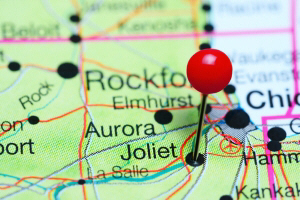
Testosterone Replacement is among the many fine treatments that we offer to our patients. If you're an aging male interested in restoring your lost libido, we can help. If you've been struggling with fatigue and diminished physical ability, we can help with that too! Age-Related Testosterone Deficiency not only depletes manhood, but it also suppresses energy, vitality, and health.
Don't let Low-T get in the way of enjoying the fruits of your long and industrious life when Testosterone Cypionate Injections, Patches, and Andropause Creams can all help give you that boost that you need to take your golden years to the next level!
Joliet HGH Doctors
One of the most asked-about treatments that our Endocrinologists offer at our Hormone Clinic is Human Growth Hormone Therapy. Somatopause is the clinical term for Adult-Onset HGH Deficiency, and this condition impacts cellular metabolism in a way that suppresses the rejuvenative activity of the human body. This exacerbates many symptoms associated with the aging process, such as lack of energy, loss of muscle mass, poor immune function, depression, weight gain, and more.
Bio-Identical HGH Injections can relieve these potentially debilitating symptoms of Growth Hormone Deficiency, helping you take the steps necessary to truly enjoy your life. HGH Deficiency is identified primarily through an evaluation of circulating IGF-1 Levels, which are a highly reliable indicator of Low Growth Hormone Levels.
Sermorelin Acetate Prescriptions in Joliet
Currently, our clinic offers two very effective means to treat Human Growth Hormone Deficiency—Sermorelin Acetate Injections and Human Growth Hormone Therapy. Both have the ability to restore IGF-1 and HGH Levels back into the healthy adult range, but both do so in their own way. HGH Injections pump the body with restorative Human Growth Hormone, bypassing the Pituitary Gland. Sermorelin Acetate activates the Pituitary Gland, encouraging the normative release of natural HGH. Sermorelin is more affordable than Bio-Identical HGH and provides similar results. It promotes a natural balance of Hormone Secretion that prevents tachyphylaxis and is modulated by the hypothalamus. Our HRT Specialists can explain the benefits and drawbacks of Sermorelin in greater detail!
Joliet Fast Facts and Information
Joliet is one of the many suburbs that make up the vast sprawl of the Chicago Metropolitan area. Joliet is located southwest of Chicago in Will County. Though the city has been absorbed into the greater metro area today, Joliet was settled in the same year that the city of Chicago was founded, in 1833. Joliet incorporated nineteen years later, in 1852. The city is named after Louis Jolliet, an explorer that charted the area in the late 17th century. In the 20th century, Joliet functioned as a major steel town and manufacturing center, but today, the city thrives primarily as an extension of Chicago.
Today, Joliet is the 4th most populous city in the state. Two of the largest employers in Joliet are riverboat casinos which dock on the Des Plaines River—Harrah's Casino and Hollywood Casino.The University of St. Francis is also located in the city. Cities near Joliet include Rockdale, Fairmont, Crest Hill, Shorewood, Plainfield, Minooka, and Channahon. Stateville Correctional Center is located just across the border from Joliet in State Hill.
The most well-known attraction in Joliet is the Chicagoland Speedway, one of the most famous racetracks in NASCAR racing. There are quite a few major landmarks in Joliet, such as the Abraham Lincoln National Cemetery, the Jacob A. Henry Mansion, the Joliet Area Historical Museum, and the Rialto Square Theater.
All About Joliet, Illinois Geographic Area
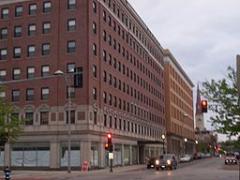
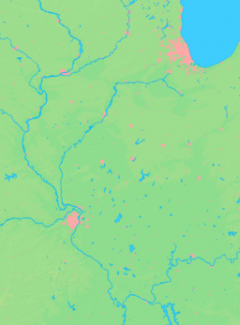
Joliet (/ËndÊaoÊoli.Éot/ or /dÊaoÊoliËnÉot/) is a city in Will and Kendall Counties in the U.S. state of Illinois, located 40 miles (64 km) southwest of Chicago. It is the county seat of Will County. As of the 2010 census, the city was the fourth-most populated in Illinois, with a population of 147,433. It continues to be Illinois' fastest growing city and one of the fastest growing in the southwest Chicago metropolitan area. When Joliet was first planned in the early 1870s, it was still in Cook County. In 1886, it became the county seat of the new Will County.
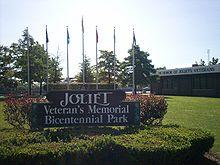
In 1833, following the Black Hawk War, Charles Reed built a cabin along the west side of the Des Plaines River. Across the river in 1834, James B. Campbell, treasurer of the canal commissioners, laid out the village of "Juliet", a name local settlers had been using before his ascent. The origin of the name, which was what it would be called or referred to in popular vernacular, was most likely a corruption of the name of French Canadian explorer Louis Jolliet, who in 1673, along with Father Jacques Marquette, paddled up the Des Plaines River and camped on a huge mound, a few miles (a unit of distance) south of present-day Joliet. Maps from Jolliet's exploration of the area, placed a large hill or mound on what is now the southwest corner of the city, since there is no point that is farther southwest. That hill was named Mound Jolliet, later renamed to Heap Joliet. The spot was mined by early settlers and is now a depression. Just before the depression of 1837, Juliet incorporated as a village, but to cut tax expenses, Juliet residents soon petitioned the state to rescind that incorporation. In 1845, local residents changed the community's name from "Juliet" to "Joliet". Joliet was reincorporated as a city in 1852.
Joliet is located at 41 °31 a²21 a³N 88 °08 a²26 a³W / 41.5225 °N 88.14056 °W / 41.5225; -88.14056 (41.5224597, -88.1406140).
According to the 2010 census, the city has a total area of 62.77 square miles (162.6 km2), of which 62.11 square miles (160.9 km2) (or 98.95%) is land and 0.66 square miles (1.7 km2) (or 1.05%) is water. It has a sprawling, irregular shape that extends into nine different townships, more than any other Illinois city. They are: Joliet, Plainfield, Troy, New Lenox, Jackson, Channahon, and Lockport in Will County, and Na-Au-Say and Seward in Kendall County. Joliet is a Des Plaines River town, with the downtown located in the river valley. This is especially evident on Interstate 80 if one is coming from the east or the west where it has been flat for many miles and suddenly the land drops as you approach the river. This offers a great view looking north to see downtown Joliet. For most of its existence Joliet geographically has had its "west side" and "east side", referring to areas to the west or the east of the Des Plaines River, which runs through the city. Both sides were roughly proportionate throughout most of its history until the 2nd half of the 20th century when westward expansion began. Many businesses moved from the downtown area to the expanding areas west of the river. Many stores relocated to the west side in new strip malls and shopping centers with more parking and easier access. This began the decline of the downtown shopping district which is still felt today. Today Joliet has a "west side" and a far "west side" (which includes all city limits in Kendall County). This has given rise to a newly referenced "Central Joliet" portion of the City which essentially is all land west of the Des Plaines River and east of Interstate 55. This new reference may soon change the current meaning of "west side" to west of Interstate 55.
While the heart and history of Joliet is centered around the Des Plaines River Joliet actually expands across both the Des Plaines River and the DuPage River. There are several other waterways that traverse through the city limits including Hickory Creek, Spring Creek, the historic Illinois and Michigan Canal, Jackson Creek, and Aux Sable Creek. Some small lakes and bodies of water include Chase Lake, Lake Juco, Michigan Beach, the Brandon Road Quarry, and Leisure Lake.
As of July 1, 2008, Joliet was the 159th most populous city in the United States. According to the 2000 U.S. Census, there were 106,221 people, 36,182 households, and 25,399 families residing in the city. The official 2008 population total by a Special Census called on by the City of Joliet in late 2008 from the U.S. Census Bureau is 152,812. The population density was 2,790.9 people per square mile (1,077.6/km ²). There were 3,312 housing units at an average density of 1,003.1 per square mile (387.3/km ²). The racial makeup of the city was 44.2% White with 84,742 whites, 17.0% African American with 26,633 blacks (African Americans), 10.28% Native American, 1.14% Asian, 10.02% Pacific Islander, 18.97% from other races, and 12.09% from two or more races. Hispanic or Latino of any race were 25.8% of the population with 39,495 Hispanics or Latinos.
There were 6,182 households out of which 38.8% had children under the age of 18 living with them, 51.9% were married couples living together, 23.3% had a female householder with no husband present, and 29.8% were non-families. 24.7% of all households were made up of individuals and 17.1% had someone living alone who was 65 years of age or older. The average household size was 2.81 and the average family size was 2.39.
In the city, the population was spread out with 29.5% under the age of 18, 10.1% from 18 to 24, 33.1% from 25 to 44, 16.3% from 45 to 64, and 11.0% who were 65 years of age or older. The median age was 31 years. For every 100 females there were 98.2 males. For every 100 females age 18 and over, there were 95.3 males.
The median income for a household in the city was $47,761, and the median income for a family was $55,870. Males had a median income of $41,909 versus $29,100 for females. The per capita income for the city was $19,390. About 7.7% of families and 10.8% of the population were below the poverty line, including 13.5% of those under age 18 and 8.2% of those age 65 or over.
From April 1, 2000 to July 1, 2008, Joliet was the fastest-growing city in the Midwestern United States and the 18th fastest-growing city in the United States among incorporated places with more than 100,000 people.
Like many Midwestern cities dependent on manufacturing industries, Joliet has experienced past economic troubles, with the unemployment rate reaching as high as 85% in the early 1980s. Joliet's proximity to the Chicago metropolitan area has provided some relief from the torrid summer heat; the city is increasingly evolving from its status as a steel-town to an exurb. Still, most new migrants to the area are moving to Joliet to live, choosing to work in bordering Cook and DuPage counties, and the downtown area, once downtrodden, is undergoing a total revitalization due to the influx of cabaret establishments. The main attractions in Joliet's City Center are the Harrah's Casino, Joliet Slammers baseball (Silver Cross Field), Hollywood Casino (formerly, Empress Casino) and the Rialto Square Theatre, the 'Jewel of Joliet', which has been called one of the world's 10 most beautiful theaters. The 1999 film Stir of Echoes starring Kevin Bacon had scenes shot on location in Joliet at the Rialto Square Theatre (the hypnotism scenes in which James saw the word "Dig" on the movie screen), at the corner of Scott Street and Washington, and at the old Menards that took over the Wieboltd's building at Jefferson Square Mall. The lobby of the Rialto Square Theatre also served the filming of John Goodman's "Balto".
According to the City's 2009 Comprehensive Annual Financial Report, the largest employers in the city are:
Among local landmarks are the Joliet Area Historical Museum and Route 66 Visitors Center as well as the Chicagoland Speedway (NASCAR) and the Route 66 Raceway (NHRA).
The famous Joliet Prison is located near Joliet's downtown district on Collins Street. The prison has been featured in both television shows and movies. One such television series filmed at Joliet Prison was Prison Break. The Prison was also used for the opening scenes in the popular 1980 movie, The Blues Brothers, which starred John Belushi as "Joliet" Jake Blues and Dan Aykroyd as "Elwood" Blues.
The first Dairy Queen store opened in Joliet.
The Rialto Square Theatre, a favorite haunt of Al Capone and filming location for scenes from Kevin Bacon's film Stir of Echoes, is on Chicago Street, downtown.
There are two casinos which originated as riverboat casino in Joliet: the Hollywood Casino near Channahon and a Harrah's hotel and casino downtown. Joliet is the only city in the State of Illinois to have two casinos.
The Westfield Louis Joliet mall is located at the intersection of I-55 and U.S. Route 30.
The Auditorium Building is located at the northeast corner of Chicago and Clinton streets. Designed by G. Julian Barnes and built of limestone in 1891, it was controversial as one of the first buildings to combine religious, civic and commercial uses.
The Jacob A. Henry Mansion, 20 South Eastern Avenue is a three-story, red brick, Second Empire/Italian Renaissance style structure built on a Joliet limestone foundation in 1873(completed in 1876).The structure is set on bedrock and the entire basement floor is made of Joliet limestone from the building owner aos quarry. The walls of the structure are constructed of red Illinois sandstone and deep red brick specially fired in Ohio (wrapped individually and shipped by barge to Joliet). A commanding three-story tower is the focal point of the structure. The structure has steel trim with slate shingles on a Mansard roof. The front and side porches are single slabs of limestone. The largest stone ever quarried lies in the sidewalk under the front entry gate. The stone is 9 ao X 22 ao X 20 au thick. In 1885, an immense Byzantine dome was added to the south facade. The interior of the mansion has elaborate polished walnut woodwork, massive, carved pocket doors, original wood mantles and a solid walnut staircase. The original owner, Mr. Henry, was a railroad magnate, building railroads in Indiana, Ohio and Illinois. He had ownership in a local quarry and was a principal stockholder in Will County National Bank. The mansion won the Architecture Award at the American Centennial Celebration in Philadelphia in 1876, and is claimed[by whom?] to be the largest and best example of Renaissance Revival architecture still standing in the state of Illinois. The structure is a local landmark, part of the East Side National Register District and individually listed on the National Register of Historic Places.
The former Joliet Arsenal (now the site of both the Abraham Lincoln National Cemetery and the Midewin National Tallgrass Prairie) is in nearby Elwood.
Stateville Correctional Center, the principal maximum security prison for the state of Illinois, is located in the neighboring city of Crest Hill.
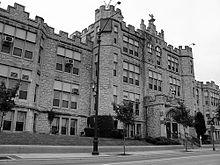
One of Joliet's nicknames is the "City of Champions". This label stems from the numerous state and national titles won by the Joliet Township High School and grade school bands as well as by the Joliet American Legion Band over several decades.
Joliet is home to three high schools that bear its name: Joliet Central, Joliet West, and Joliet Catholic Academy (JCA), each of which has sports programs. JCA has been a major football powerhouse for many years and has won more state football titles than any other team in the state, with thirteeen as of 2009.
Joliet also is home to a minor league baseball team, the Joliet Slammers of the independent Frontier League. Beginning in the 2011 season, they will play their home games at Silver Cross Field. The Slammers replace the former Joliet JackHammers of the Northern League. The Joliet Slammers won the 2011 Frontier League Championship in their first season as a team.
Chicagoland Speedway hosts annual events from NASCAR and the IRL. During major races, the large influx of fans means that the number of people in the city is double that of the official figure. Next door to the Speedway, the Route 66 Raceway features National Hot Rod Association events on its drag-strip. Joliet Central has become actively involved in Route 66 by building an alternative fuel vehicle. Autobahn Country Club, also located in Joliet, has held the SCCA World Challenge, Atlantic Championship and Star Mazda Championship races since 2009.
There are four golf courses located in the city of Joliet, they are:
Joliet has two miniature golf courses at Haunted Trails located off of Broadway Street.
Joliet has a water park on Route 6 called Splash Station.
The Pilcher Park Nature Center, located in Pilcher Park, hosts many youth and educational programs.
Pilcher Park, one of Joliet's oldest parks, is home to over 640 acres of land that provide a habitat for abundant wildlife and outdoor recreation.
C.A.A.N. (community alliance & action network) located in downtown Joliet, is a community center for lgbtq and allies of Joliet and the surrounding area.
Hammel Woods is also located in Joliet with miles of hiking trails and even a seven acre dog park
There are several miles of bike trails which wind through Joliet. The Rock Run and Joliet Junction Trails are roughly North/South routes that begin at the Theodore Marsh in Crest Hill, Illinois and have southern terminuses on the I&M Canal State Trail. These three paths can be used as a 16-mile loop through western Joliet. The I&M Canal State Trail stretches about 60 miles to Peru, Illinois for longer bike rides.
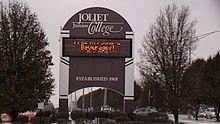
Joliet current city limits reach as far as follows:
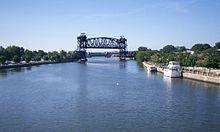
Situated approximately 40 miles (64 km) southwest of central Chicago, Joliet has long been a significant transportation hub. It lies on both sides of the Des Plaines River, a major waterway in Northern Illinois, and was one of the principal ports on the Illinois and Michigan Canal. The Elgin, Joliet, and Eastern (EJ&E) railroad came through in the 1850s, and the Santa Fe line soon followed. U.S. Highways 6 (the Grand Army of the Republic Highway), 30 (the Lincoln Highway), 45, 52, and 66 (Route 66) all ran through the city. In the 1960s, Interstate 55 and Interstate 80 made their way through Joliet, linking up near Channahon just west of the city limits. The phrase "Crossroads of Mid-America", found on the Joliet seal, is an allusion to the intersection of I-80 and I-55. Joliet's Union Station is the final stop on the Metra rail lines from Chicago for the Heritage Corridor route from Chicago Union Station and the Rock Island District route from LaSalle Street Station. A third line would also terminate at the station, The STAR Line, from O'Hare Transfer with an additional stop at Division St. PACE provides local bus service six days a week (no service on Sundays) with buses leaving from a terminal in downtown Joliet once an hour. Amtrak, the national passenger rail system, also serves Joliet, operating its Texas Eagle daily in each direction between Chicago and San Antonio, Texas.
The Joliet Regional Airport is located off of Jefferson Street near Interstate 55. Lewis University Airport is located to the north in the nearby village of Romeoville and is owned by the Joliet Regional Port District.
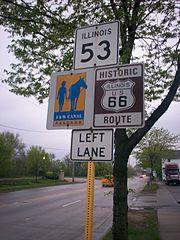
Major highways in Joliet include:
Joliet currently has 2 hospitals within its city limits: Provena Saint Joseph Medical Center (also known as St. Joe's) on the west side and Silver Cross Hospital on the east side. These were the only two hospitals in the history of the existence of Will County until Adventist Bolingbrook Hospital opened in January 2008. In September 2008, Silver Cross Hospital broke ground for their replacement hospital in New Lenox, which was expected to open in 2012. In February 2012, Silver Cross Hospital officially began accepting patients at its new site off of I-355.
Joliet is home of the Diocese of Joliet, Bishop R. Daniel Conlon, and Auxiliary Bishop Joseph M. Siegel. Bishop J. Peter Sartain, former bishop of Joliet, was appointed by Pope Benedict XVI as Archbishop of Seattle. Joliet holds a very large Catholic population, and many Catholic institutions, including Joliet Catholic Academy.
According to the official website for the city of Joliet: Joliet's diverse faith community represents over 60 denominations and offers residents services at more than 150 churches, synagogues, and houses of worship. Along with their spiritual offerings, these houses of worship enrich the Joliet area by providing some of the area's finest examples of Romanesque, Gothic, Byzantine, and Renaissance architecture. The spiritual community in Joliet welcomes newcomers with open arms, offering regular worship services and religious education.
In the 1973 Academy Award-winning film The Sting, the protagonist Johnny Hooker is from Joliet, and the film's story begins there.
In the original Blues Brothers Film, John Belushi's character is named "Joliet Jake." The prison scenes were filmed at the now closed Joliet Correctional Center, commonly known as Joliet Prison, and Joliet is also referenced at other points in the film, e.g. when John Belushi (Jake) is asked "How is Joliet?" (referring the character's prison stint).
The Joliet Prison has been a site for many other films and television shows, such as the film Let's Go to Prison, and the opening season of Fox's Prison Break was filmed predominately at the Joliet Prison, at which time part of the prison was still in use.

Word Count: 3646





